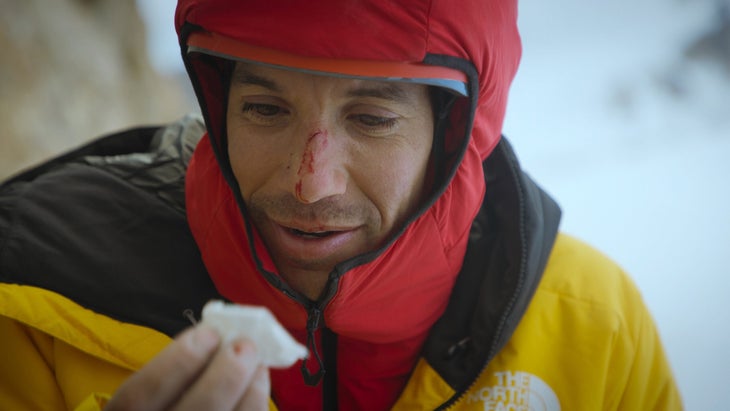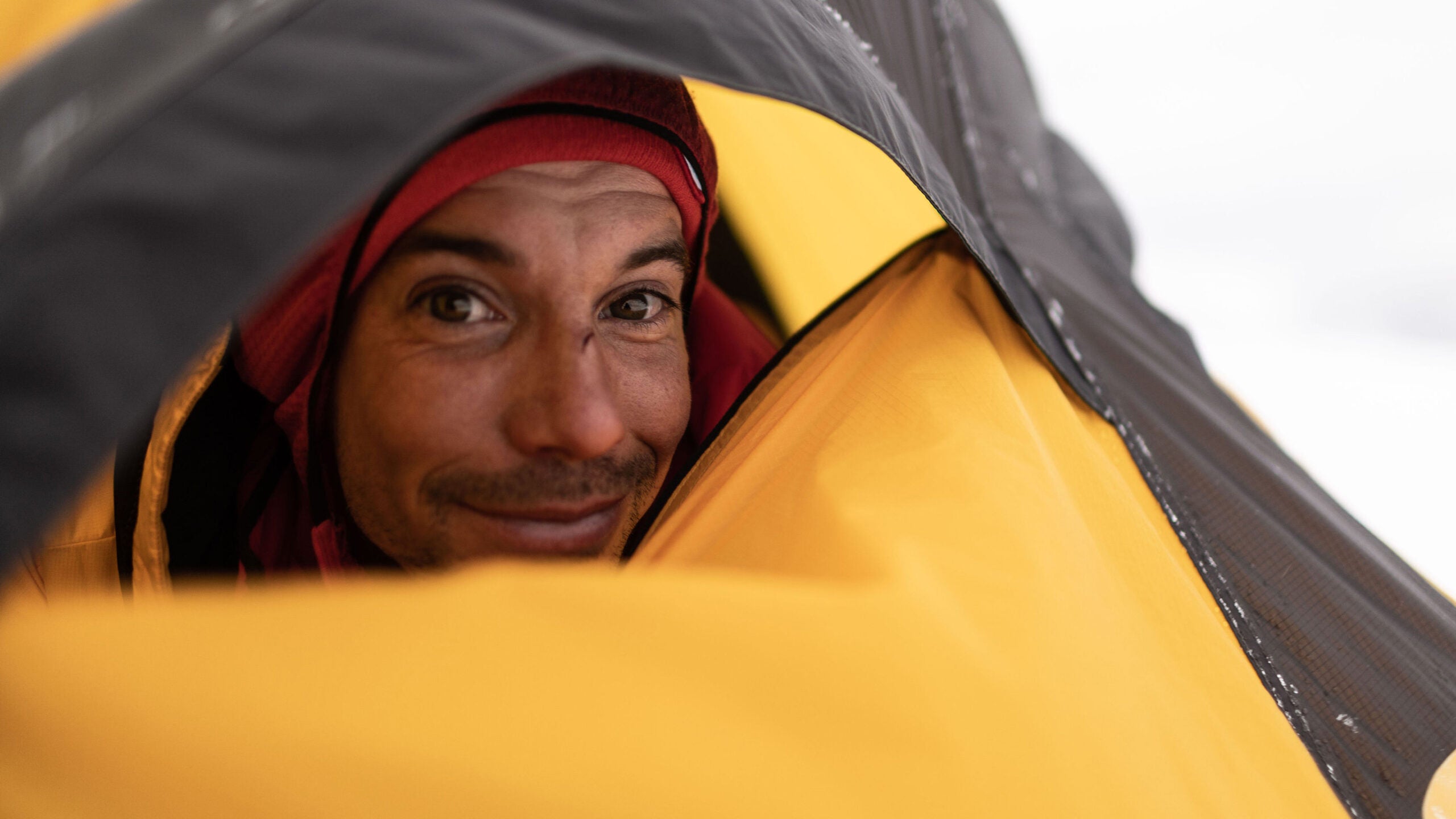Alex Honnold is back changing diapers, waking up at odd hours of the night, and climbing cliffs near his home in Las Vegas, Nevada. The Free Solo star and his wife, Sanni McCandless, welcomed their second child, Alice, in late February. Since then, Honnold has been on permanent daddy duty—with the occasional break to belay David Letterman.
Outside spoke to Honnold just days before Alice arrived about his newest climbing documentary, Arctic Ascent, which aired on National Geographic in the spring. We also asked Honnold which kinds of projects in the mountains inspire him (and which do not).
OUTSIDE: For Arctic Ascent you chose to climb a little-known big wall in remote Greenland called Ingmikortilaq. Why not target El Capitan or Cerro Torre or another more well-known mountain?
Going to Ingmikortilaq is where my personal passion lies right now. At the moment doing a big film project on those other walls doesn’t appeal to me. If I want to do a pure climbing challenge I’ll just do it for myself and I don’t need to make a film out of it. With Greenland we had the opportunity to tell a story that I thought was important for people to see on television. To show the beauty of eastern Greenland, to take a glaciologist to research climate change. I’m excited about a show like this because it seems worthwhile in a way that a pure climbing project isn’t. I still love climbing projects but I don’t need to make them public. No climbing project I do is ever going to top Free Solo in terms of the scope or scale or breadth of the reach. I’m never going to top it because no climbing film is ever going to the Academy Awards again, I suspect. So I may as well focus on projects that are worthwhile.

You don’t see a climbing film making it to the Oscars anytime soon. Why not? What are the components needed for climbing films to continue to evolve?
I think climbing films are improving a ton. I grew up in the world of Rampage and the original Masters of Stones and all of these old films that nowadays feel horrendously dated and of low quality. So climbing filmmaking has come along tremendously. But the Academy Awards is so competitive and you’re competing against the best documentaries in the world. It’s rare in a climbing film for there to be the right combination of storytelling and climbing, and the right level of cinematography. It’s so hard to get the right pieces to come together. Part of the success of Free Solo was the sheer luck that free soloing is so easily understood by the mainstream. It’s what people think rock climbing is. It’s easy to see visually. It’s gripping. It’s arresting. So even if someone is doing something harder but they are roped up, it doesn’t capture mainstream viewers the same way because it’s harder to understand. In some ways I’m so lucky that free soloing is so arresting.
There’s a limited number big walls to climb—faces large enough to take most climbers multiple days to ascend—and many of them are in these far-flung places that require you to travel to the ends of the Earth. Do you have motivation to tackle more routes like these after climbing Ingmikortilaq?
There are a few but maybe fewer than you’d think. The Trango Towers in Pakistan, that whole massif, I’d love to climb those in my lifetime because they are such quintessential granite spires, so I feel like I have to. It’s the same with Cerro Torre—I just felt that, as a climber, I should climb that at some point in my life. There are others, like Thor Peak and Mount Asgard, and some of the other walls on Baffin Island that seem like they might be cool to climb. But it’s also a lot of work to go to the middle of nowhere just to reach them. And now, with a family, I’m not sure it means enough to me, personally, to go. And that’s why this project in Greenland was different. Climbing a wall in a remote part of the world makes me excited, but it means a lot more if there’s something else to the project—like climate change—so if I’m going to going to spend that much time away from my family, I want it to matter.
Do you have any motivation to do more high-altitude alpine mountaineering?
A tiny bit. I’ve always kind of wondered what it would be like, and actually last winter I did an expedition to to Mount Vinson in Antarctica, and Aconcagua in Argentina, to just dabble in high-altitude mountaineering. And my takeaway was that I hate high-altitude mountaineering! It’s not for me. But this was actually was kind of great, because rather than looking at my experience as a bad expedition, I see it as having been a great way to learn something important about myself. This is not for you, and that you can just focus on the thing you love, which is rock climbing. I’ve always kind of wondered: should I be climbing bigger mountains? Should I be doing these other things? And this trip gave me a resounding answer: no, you should not be climbing these peaks. To be honest, I just didn’t love high-altitude mountaineering. I didn’t like the slowness and the hiking. And I get migraines sometimes in normal life, and I was getting horrendous headaches triggered by altitude in a way that seemed ridiculous. Fitness-wise I was fine, but I was getting so sick at altitudes that shouldn’t have been that serious. My body wasn’t acclimatizing. I’m sure I could troubleshoot it and get better, but I just didn’t love it.
So it’s safe to say that we’re not going to see you on Mount Everest anytime soon.
I wouldn’t say that. I would maybe go climb a peak like that if it was a sponsored expedition and I had the chance. Given the opportunity, I’m sure it would be a cool life experience. But I’m never going to be doing anything great on that mountain.
This interview was edited for space and clarity.

